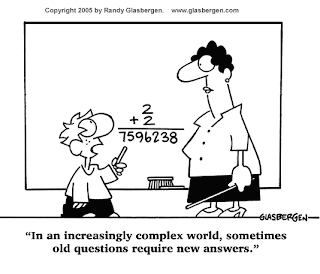Carol Ann Tomlinson has become some sort of guru, mentor or reference when you talk about DI. I personally enjoyed reading this book for my IDP, not only because the language and the insight into DI is very easy to follow if you're not familiar with terms or ideas associated with DI, but also because I got the feeling that she understands the inner constraints and deceptions? of us teachers in our path of making learning accessible for all of our students. Mrs. Tomlinson clearly reveals the secret to one of the most successful and powerful changes in the didactics of teaching in this easy-to-read book, defending the need for a new kind of education and a change of perspective from what we are used to think education is.
As a DI rookie myself, I can say I really got to understand the core principles of DI by reading this book. The vivid examples of classrooms, classroom practices and data associated to learning and teaching issues make the content of the book come alive and progressively helps you shape up what DI might eventually look like in your own context. Mrs. Tomlinson keeps an insteresting style in which the usual metalanguage and wording of academic texts is replaced with a deeper connection and understanding of the conflicts teachers face when teaching heterogeneous groups of kids. Most of the chapters in the book tell you about stories in which DI comes in hand as a solution to a teacher's dilemma or even nightmare!
The content of the book flows from the basic understandings of What is a differentiated classroom? all the way through elements of differentiation, and my favorite, How do you make it all work?. Along with the book you gain also a good understanding of some of the basic but widely-known instructional strategies to differentiate: centers, tiered activities, menus, contracts, choice boards, among others.
Rethinking how we do school and for whom,-one of the chapters, takes you on a walk in time, emphasizing the changes that have impacted the ideas on education, and how research has been a key element to make education respond to an incredibly rapid-moving world. I loved to read about the fact that even though there is so much research and knowledge about how we learn now, there is little evidence of how all that wealth is actually producing more visible transformations in education. The reflection that is given to us in terms of the challenges we can offer, and the opportunities to balance equity and excellence in our classroom, make our efforts worth trying. "All children come to us differentiated" (p.24), so it really makes sense to offer them a kind of instructions that values differences and that gets accommodated to those differences. Thinking that students need to fit what they find when they enter your door, will make those who could be encouraged to give more, to simply give up and lose that intrinsic love for learning.
The concept of artful teaching, a response to a desperate geometry teacher who struggled because he was extremely skilled and professional, thought of powerful and engaging activities, and yet his students were not on the same dimension and really hated the class, is a simple and basic idea that serves as the foundation for DI according to the author. The harmony that needs to exist among these 3 elements: The Teacher, The Students and The Content will totally make a difference in the way you approach education itself:
- Each kid is like all others and different from all others.
- Kids need unconditional acceptance as human beings.
- Kids need to believe they can become something better than they are.
- Kids need help in living up to their dreams.
- Kids have to make their own sense of things.
- Kids often make their own sense of things more effectively and coherently when adults collaborate with them.
- Kids need action, joy and peace.
- Kids need power over their lives and learning.
- Kids need help to develop that power and use it wisely.
 |
| Does it sound familiar? Isn't it time already to make them part of deciding what's going to be exciting? |















